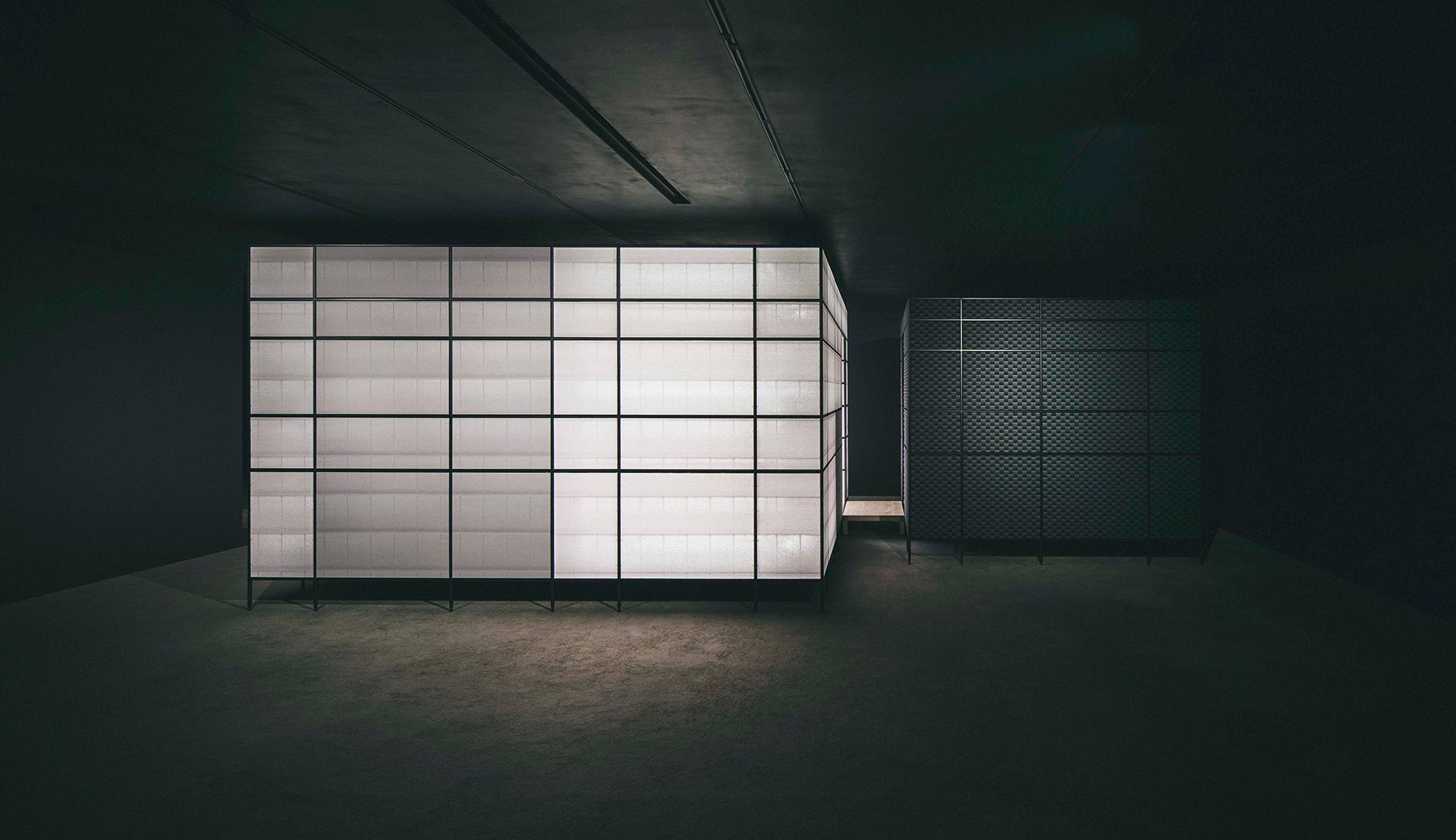ARCHIVE
Texture from Textile Vol.3: Tea Room “Ori-An”
- Dates
- 8 September–15 October 2023
- Hours
- 10:30–18:00
(Admissions close 15 minutes prior to closing time)
Closed on public holidays.
- Admissions
- Free
- Organizer
- HOSOO Co., Ltd.
HOSOO Co., Ltd. is pleased to announce the exhibition, Texture from Textile Vol.3: Tea Room “Ori-An,” showcasing a textile tea room.
Ori-An is distinct in many ways from what we know today as a Japanese tea room or teahouse. Particularly notable is that this place for the tea ceremony comprises textiles surrounding the space. The tea room is designed with the cooperation of Reijiro Izumi, the president of SABIÉ, an organization that explores contemporary expressions of the tea ceremony culture. According to Izumi, one of the roots of a tea room is the idea of creating a place for gathering by enclosing the space. Such spatial composition is consistent with the unique features of Japanese architecture, which historically has defined spaces with partitions like fusuma and shoji screens. At Ori-An, we return to the origin of a tea room, “enclosure,” and examine the nature of space, starting with textiles and expanding to the contemporary tea ceremony culture.
The textiles used at Ori-An are from our new textile collection titled “Shoji Fabrics,” collaboratively created in 2023 by a Netherland textile designer Mae Engelgeer and HOSOO. The collection was designed by Engelgeer, who received inspiration from shoji screens found in Japanese-style houses, and was produced using a Nishijin textile’s traditional weaving method called sha. Sha is a technique in which two warp yarns are twined when weaving in a weft yarn to create an openwork weave on the front side of the textile. At HOSOO, we explored textiles’ textures using different yarns, such as those made of washi paper, and altered the traditional sha technique by interpreting it in a modern way to create sha textiles with a unique transparent quality.
Another important aspect of Ori-An is that its tea room structure is composed using today’s standardized framing components. Their dimensions and proportions are somewhat different from those of a traditional tea room established during the time of Sen no Rikyu. Conforming to these standardized sizes becomes a precondition to slightly disturb the traditional dimensions and proportions, introducing subtle fluctuation to the formalized space. Furthermore, these framing elements can be disassembled and reassembled, making the structure a “demountable tea room” with fluid functionality.
At Ori-An, sha’s unique gauzy transparency imbues the tea room with fluidity, gently connecting inside and outside without completely dividing the space. The room also has the lightness of being a temporary structure. Through the project, Izumi interprets such fluidity as a form of 数寄=透き[a refined taste=a void; homonymies pronounced suki] and explores the potential of the tea ceremony held at a place different from a permanently-built tea room.
Through the activities of its research series, Texture from Textile, HOSOO GALLERY has been committed to pragmatic efforts of reinterpreting architectural history with textiles as the theme. The Ori-An project draws upon these activities and relies on the tea ceremony culture as a key to deepening our inquiries into the development of diverse textile-derived culture for today and the future.
Architect: SUO
Color direction / Textile Design:Mae Engelgeer
Cooperation: Reijiro Izumi (President, SABIÉ), Tesera Co., Ltd., Kumiko Idaka
Photographer: Kotaro Tanaka
Advertising Artist: Akihiro Morita
Research: HOSOO STUDIES
Director: Masataka Hosoo




